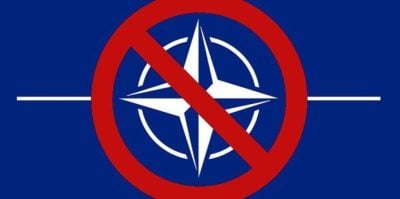Wars: The Cancelled History

All Global Research articles can be read in 51 languages by activating the Translate Website button below the author’s name.
To receive Global Research’s Daily Newsletter (selected articles), click here.
Follow us on Instagram and Twitter and subscribe to our Telegram Channel. Feel free to repost and share widely Global Research articles.
***
On her visit to New Delhi, Italian Premier Meloni declared “the Russian aggression against Ukraine” is a “provocation at the heart of the UN Charter” and undermined “the rules-based international order”, concluding that “we cannot submit to the law of the fittest”. In this way, the history of the events that led to the current critical situation is erased. We reconstruct it in this episode of Grandangolo, in its essential features:
1. NATO was born from the Bomb.
2. Yugoslavia: the founding war of the new NATO
3. NATO’s expansion eastward toward Russia
4. US and NATO attack and invade Afghanistan and Iraq
5. NATO demolishes the Libyan state
6. US/NATO leadership in the coup in Ukraine
7. The aircraft carrier Italia on the war front
8. USA AND NATO tear up the Treaties and deploy new nuclear weapons in Europe
The moment when the Cold War ended with the dissolution of the Warsaw Pact and the Soviet Union in 1991 was fundamental.
The United States took the opportunity to unleash the first post-Cold War conflict in the Gulf, in which the main NATO countries took part, including Italy. At the same time, NATO moves to expand eastward toward Russia.
The first step is the demolition of the Yugoslav Federation, which the United States and the European NATO powers began in 1990.
The war, called “Operation Allied Force”, started on March 24, 1999.
While demolishing the Yugoslav Federation with war, NATO began to expand eastward. This despite Washington having assured USSR, President Mikhail Gorbachev, that “NATO will not extend an inch eastward.”
In twenty years, NATO expanded from 16 to 30 countries. With the forthcoming entry of Sweden and Finland, it will expand to 32 countries increasingly close to Russia. Three other countries – Bosnia and Herzegovina (formerly part of Yugoslavia), Georgia, and Ukraine (formerly part of the USSR) – are candidates to join NATO.
The video of this article has been censored on Youtube. For those who want to see it, here is the link.
*
Note to readers: Please click the share buttons above or below. Follow us on Instagram and Twitter and subscribe to our Telegram Channel. Feel free to repost and share widely Global Research articles.
This article was originally published on byoblu.
Manlio Dinucci, award winning author, geopolitical analyst and geographer, Pisa, Italy. He is a Research Associate of the Centre for Research on Globalization (CRG).
Featured image is from The Transnational

